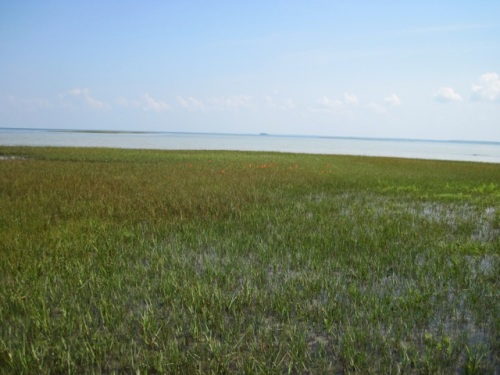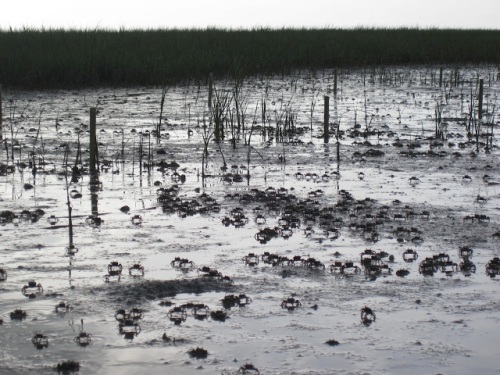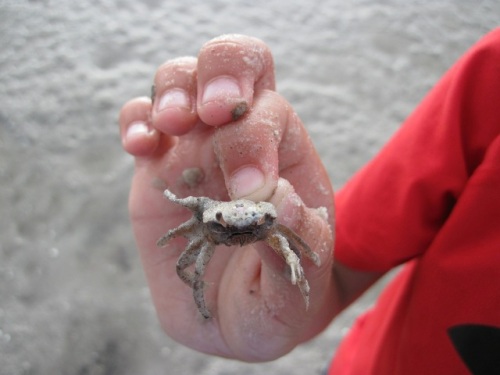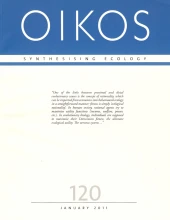Which species is best for their host marsh cordgrass? Fiddler crab or mussel? The answer is – it depends. As often, both in ecology and everyday life! Read more in the new Early View paper “Independent and interactive effects of two facilitators on their habitat-providing host plant, Spartina alterniflora” by A. Randall Hughes and colleagues. Below is a short summary of the study: And don’t miss the video in the end!
From a distance, salt marshes appear dominated by one (or maybe a few) plant species, such as marsh cordgrass Spartina alterniflora.
However, there are also many animals residing in the marsh, and prior research has demonstrated that two of these animal species, fiddler crabs (Uca sp.) and ribbed mussels (Geukensia demissa) facilitate the growth and production of cordgrass. Fiddler crabs create burrows that increase oxygen in the sediment, reducing stress on cordgrass roots. The fiddler crabs also aerate the sediment during their feeding, and they excrete nutrients that can be utilized by the plants. Mussels aren’t quite as charismatic as fiddler crabs, but they settle around stems of cordgrass, and the byssal threads that they use to attach to one another and to the sediment can help prevent erosion. In addition, they excrete nutrients and other organic material as a byproduct of their filter-feeding, and the plants take advantage of these nutrients.
So who is MORE beneficial for cordgrass, mussels or fiddler crabs? And is having both species present better than just having one? Our study suggests that as with much in ecology – it depends. For one, it depends on what you measure. If you look at the number of cordgrass stems, then fiddler crabs are the better facilitator – cordgrass with fiddler crabs has higher densities than cordgrass without fiddler crabs, regardless of whether you have mussels or not. But if you look at plant height (which is correlated with biomass), then mussels are the better facilitator, but only when fiddlers aren’t around. It also depends on cordgrass genetic identity: some genotypes respond more strongly to the presence of facilitators than others. In the end, the more responses (and genotypes) you include, the greater the benefit of having both facilitator species.
Over the course of this study, Althea (my co-author and graduate student) noticed high mussel densities in and around sea lavendar (Limonium carolinianum) plants. She is now exploring this relationship and its implications for our understanding of facilitation more generally. A good example of how there are always more questions than answers…
Video link –
http://www.youtube.com/watch?feature=player_embedded&v=htOwL70LKyw
Video caption: – This video was produced by WFSU-TV for the In the Grass, On the Reef project. In the Grass, On the Reef is funded by the National Science Foundation.
Photo credits: R. Hughes





Leave a comment